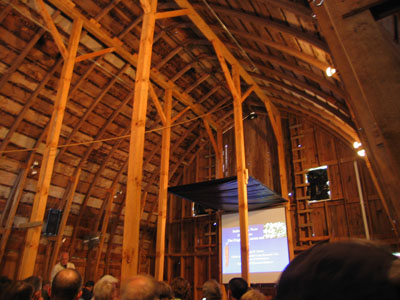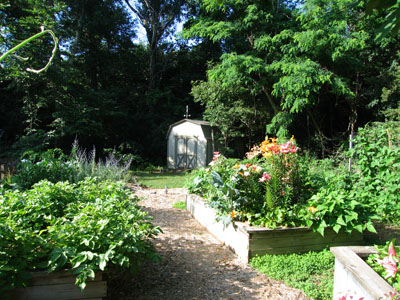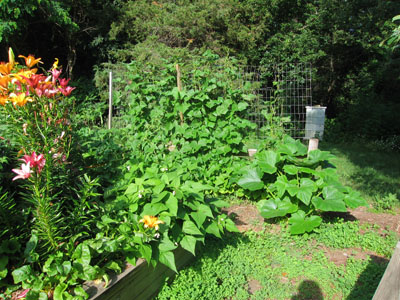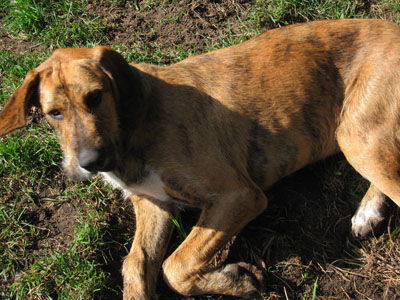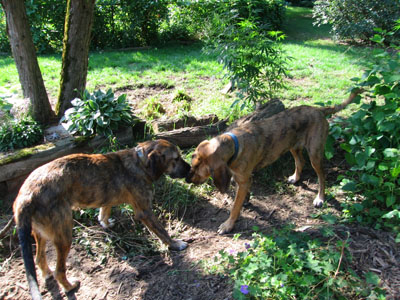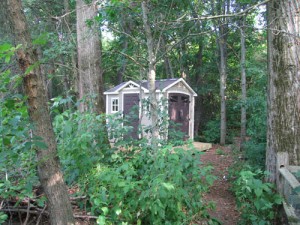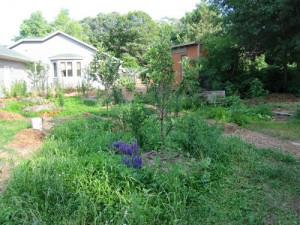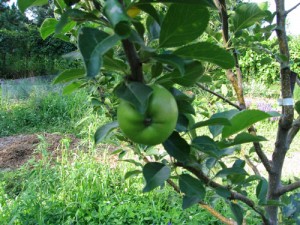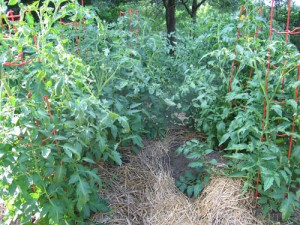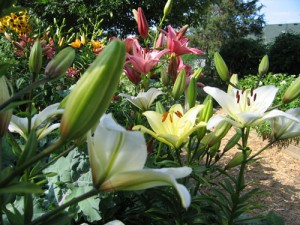Summer Waning Summer Moon
There was a pagan feel to the gathering at Seed Savers Exchange. Ironic, since Luther College in nearby Decorah represents a conservative brand of Lutheranism. There was at least one obvious symbol, a man wore a t-shirt with a Wiccan theme, but the more pervasive and more subtle expression came through in conversations like the one I had with Virginia Nowicki, soon to be Gardener’s Supply Catalogue official national garden crusader.
“In the garden we feel a connection to the divine, the sacred,” she said while we ate organically raised chicken and pork, kohlrabi salad, heirloom green beans and mashed potatoes. “We feel authentic.”
“Yes,” her husband said, “We belong to that land. It’s our home. We feel like we’re just one of the animals that live there.”
Virginia will begin promoting Liberty Gardens in a couple of weeks on a website she’s producing and through the network of those connected to Gardener’s Supply.
Virginia and Bob live in Downer’s Grove, Illinois. Their home serves as a demonstration site during Permaculture Design classes. They moved in thirty years ago.
“When the city inspector came, he asked when the lawn would come.” Bob said. “I told him we weren’t planning on a yard. He seemed taken aback.”
“Well,” he asked, “how will you deal with the mud? I can’t give you an occupancy permit until you do something about that.”
“Woodchips,” Bob said.
“What?”
“Woodchips. We’ll put down woodchips.”
“Oh, all right. When the woodchips are down, I’ll sign your permit.”
“We put in eight inches of woodchips,” Virginia says, “eight inches. We imagined where the paths would go, then put trees and garden beds in the places that weren’t the path.”
There home is in the midst of Downer’s Grove.
There were many examples of this kind of extraordinary devotion to the land and to growing food in concert with the cycles of nature, rather than against them.
Another man from Champaign, Illinois told me he fed himself and his wife and his son, his wife and their three kids. Deborah Madison, the vegetarian cookbook maven, signed her books. She’s on the board of SSE. Eliot Coleman, a man who bought land from Helen and Scott Nearing–Living the Good Life, has a success story of intensive gardening. He times his four-season gardening in concert with the Celtic cross-quarter holidays. Mike McGrath, former editor of Organic Gardening and host of a garden show on NPR, is a garden crusader himself.
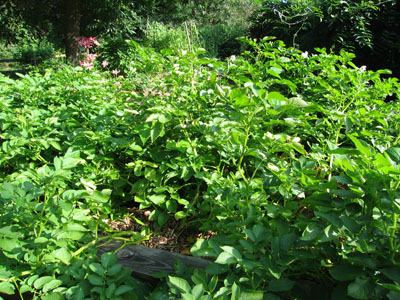 potatoes, dug just before cooking. They had a distinct flavor, a nutty earthy tone unfamiliar from the long since harvested potatoes typical of both home and restaurant cooking. This meal included our garlic, our kale and chard, the potatoes garnished with our flat parsley and a bowl of sugar snap peas as an appetizer.
potatoes, dug just before cooking. They had a distinct flavor, a nutty earthy tone unfamiliar from the long since harvested potatoes typical of both home and restaurant cooking. This meal included our garlic, our kale and chard, the potatoes garnished with our flat parsley and a bowl of sugar snap peas as an appetizer.
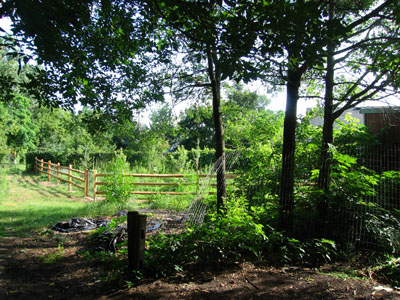 Summer Waxing Summer Moon
Summer Waxing Summer Moon